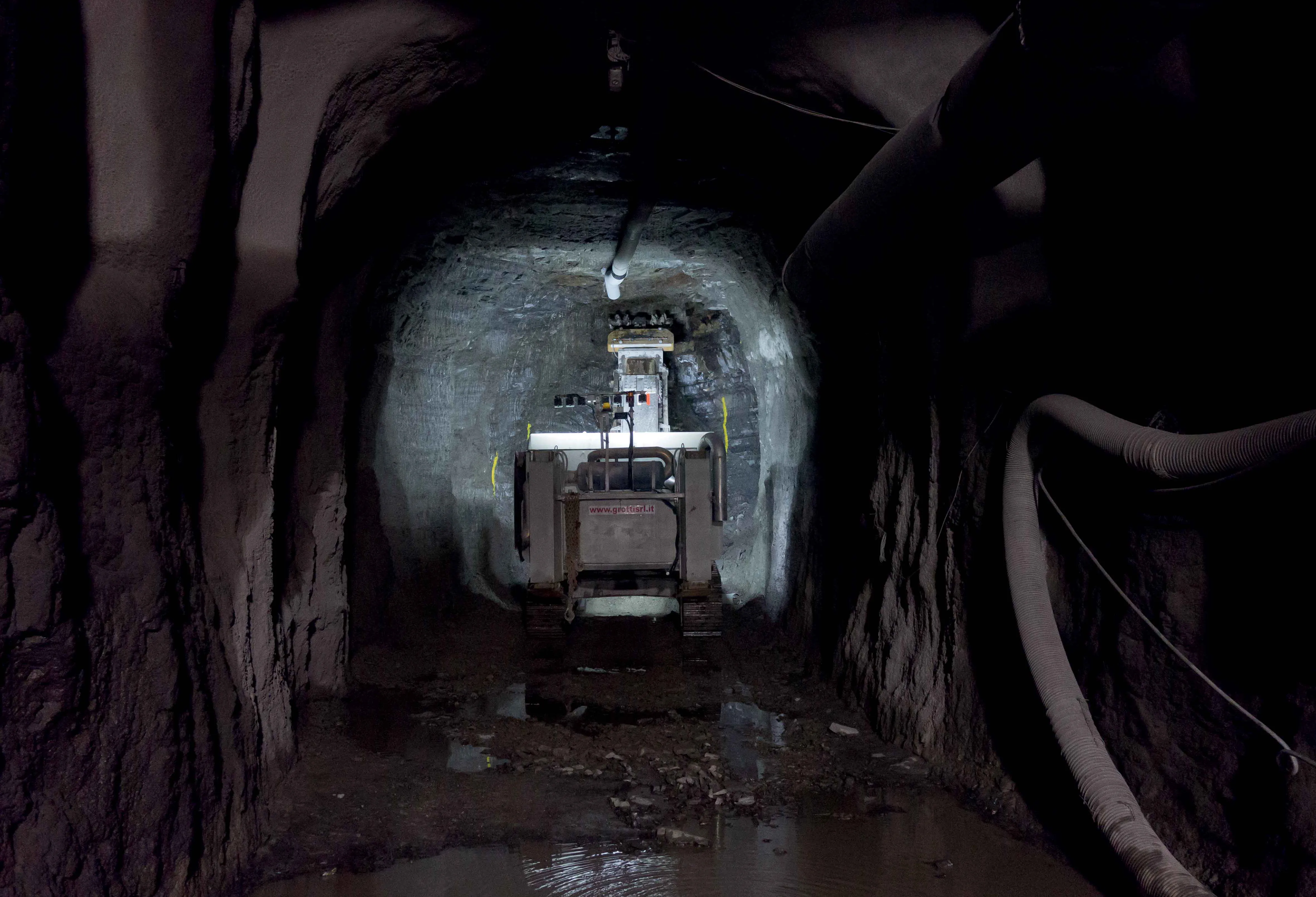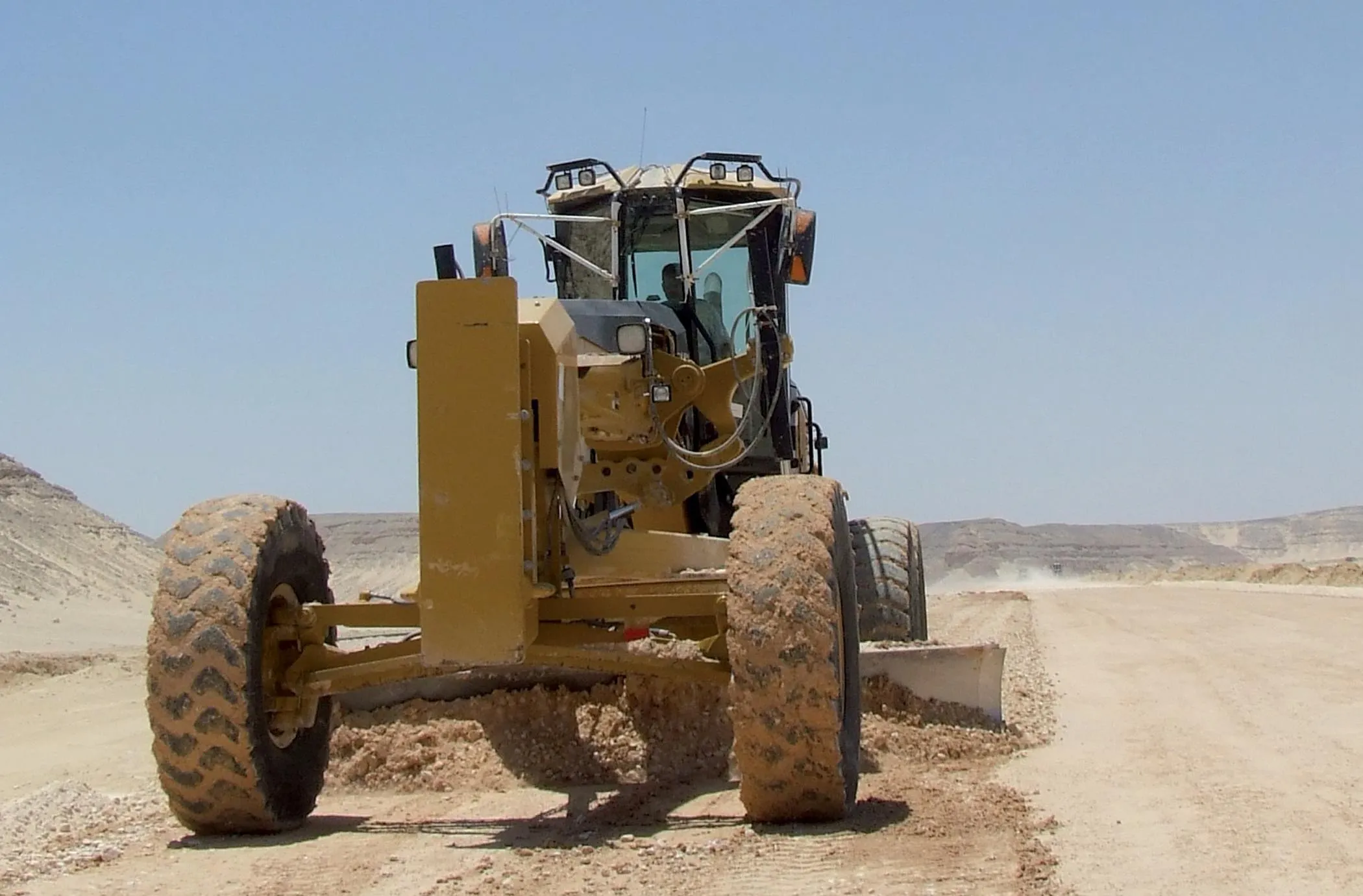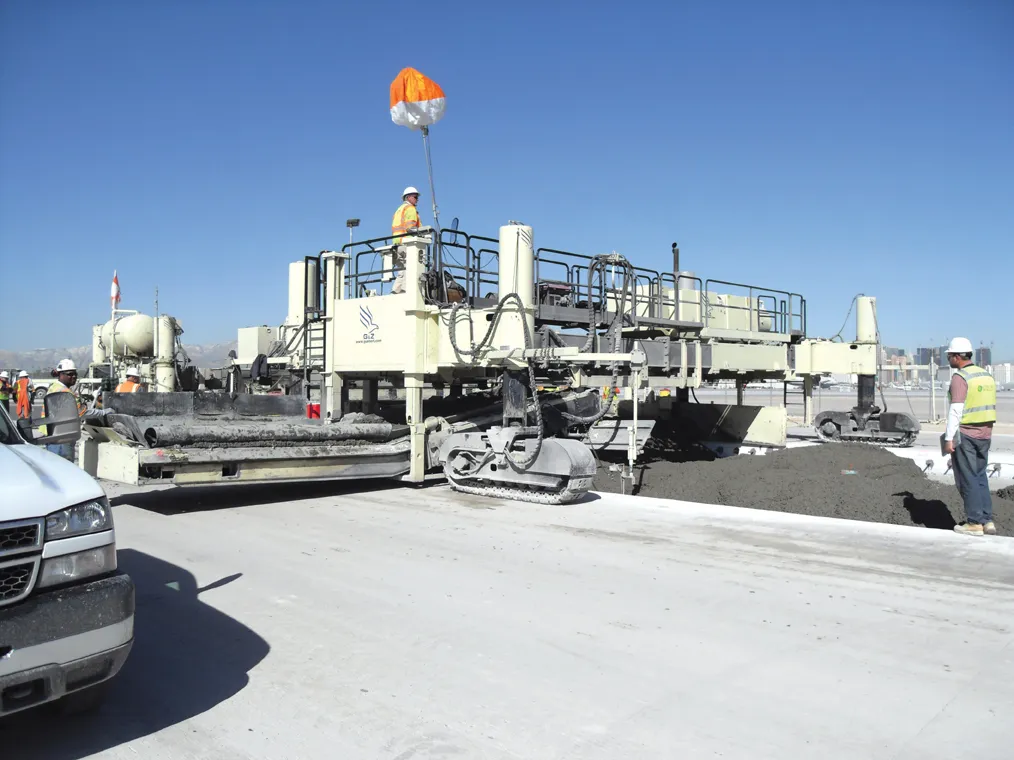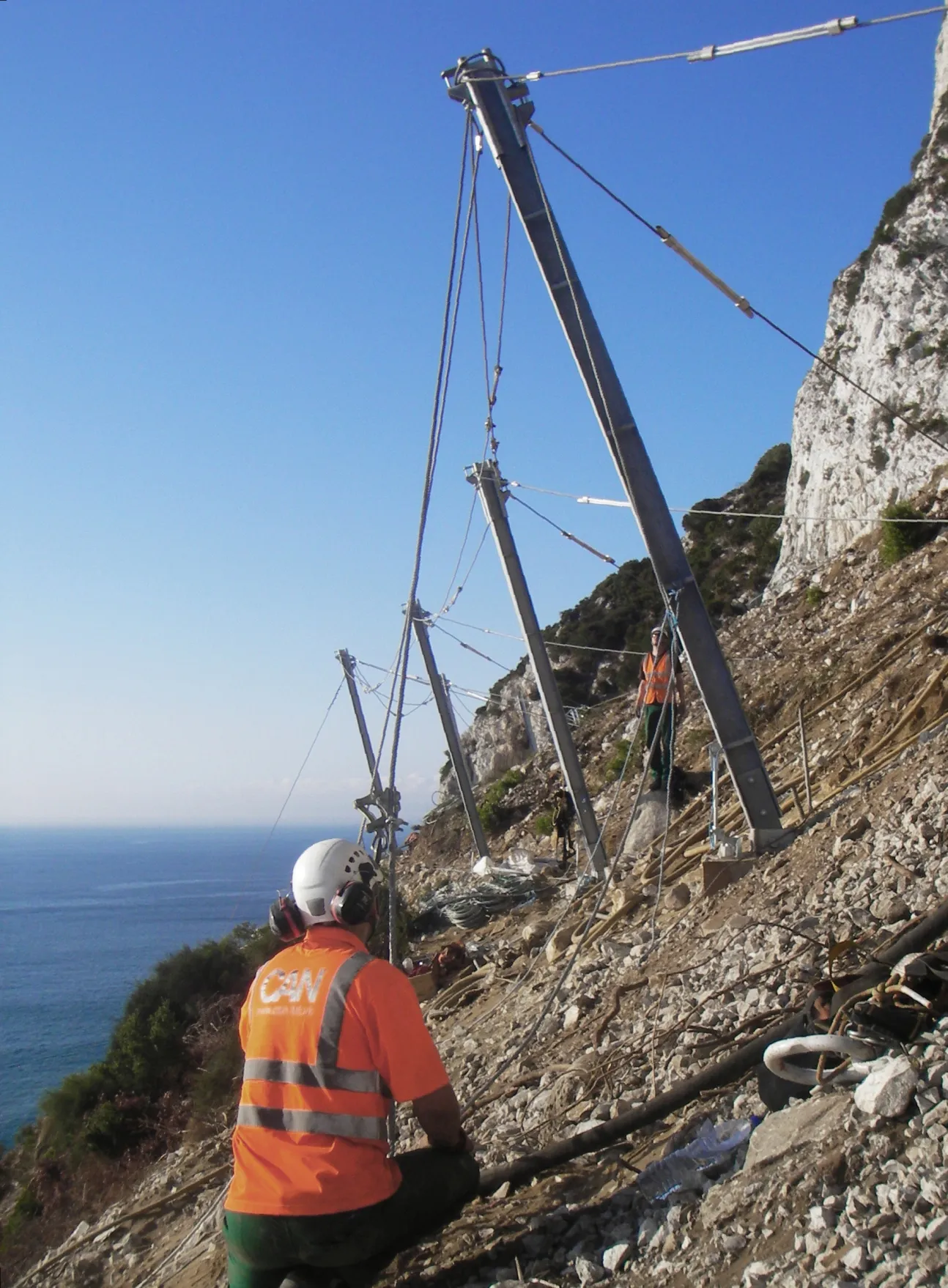New levels of efficiency and sophistication are being seen in the latest earthmoving machines coming to market - Mike Woof writes. The earthmoving equipment segment accounts for one of the largest parts of the total market for construction machines. All around the world excavators and articulated dumptrucks (ADTs) can be seen operating on construction sites. With a massive array of manufacturers offering these machines, it is no surprise that the segment is hotly contested. In developed markets firms are en
May 25, 2016
Read time: 4 mins

The construction of a tunnel in Pontremoli in Italy highlights how machine-mounted cutter heads are effective in challenging conditions for excavation - Lucio Garofalo reports
Pontremoli Magra, a town in the province of Massa-Carrara on the Tuscan side of the Apennines is the site of the Museum delle Statue Stele Lunigianesi (the Museum of the Stele Statues of Lunigiana) installed in the Piagnaro Castle dating back to the 11th century. It is one of the most important collections of European pre-historic monuments and holds particular importance for their study. In response to the growing interest for the statues marked by an increase in visitors, the town of Pontremoli decided to improve access to the castle, reachable only by covering a distance on foot with a difference in height of 40m. The project, financed by the Regione Toscana, provides for a pedestrian tunnel accessible from a parking area adjacent to the town’s historic walls.
There are several challenges, especially when it came to tunnel excavation. These works were assigned to the contractor, Ambrogetti, based in Verghereto (province of Forli-Cesena) which specialises in foundations.
In theory, constructing a pedestrian tunnel 80m long by 4m wide and with an excavation face of about 20m2 should not have presented too many complexities. However, this small underground job had a concentration of problems that forced a tailor-designed solution.
First among the challenges were the characteristics of the rock masses that the short tunnel would have to cut through. The excavation would be performed within a rock sequence containing predominantly siltstone and fine-grained quartz-feldspar sandstone with intervals of medium to coarse-grained massive sandstone.
Direct tests on the rock core and laboratory tests on integral samples taken during the continuous core surveys revealed that the rock mass fell into classes with an unconfined compressive strength of R=50-100 MPa and 100-200 MPa, whereas the rock quality designation (RQD) was between 80% and 90% in the areas of relatively undisturbed rock. These characteristics lent themselves to full-section excavation using drilling and blasting, but given the proximity to the medieval walls, this was not feasible.
Blasting would have induced vibrations on buildings in the historical centre just metres from the entrance, as well as on the castle itself sitting practically on the vertical axis of the tunnel. Despite the high compressive strength of the rock mass, mechanical excavation using a hydraulic breaker was chosen, a solution that was suited to the conditions due to the high degree of fracturing.
Work began by constructing a 9m-long, box-shaped tunnel entrance of reinforced concrete, inserted into the superficial layers for stabilisation and to allow the restoration of land on the slope. At that point, excavation commenced, but after two months it was clear that this method was too slow. Production was further slowed by the removal of the excavated rock.
With blasting not an option and taking into account the breaker’s low productivity, the contractor then evaluated a roadheader, which had to be small due to the tunnel section. The contractor rented a Grotti GTF 400 RC with MultiRadius Pro technology, fitted with a1141 Simex TF 3000 cutter head. The machine is smaller than an electric-hydraulic powered roadheader of similar productivity and was more economical to rent. Key features include a robust telescopic boom, hydraulics with a flow rate of 540litres/min, dedicated software to control the hydraulic system and all machine functions, as well as a remote control.
From the first tests performed on the excavation face it was clear that the system ensured higher productivity compared to the breaker while delivering more precise profiling. The machine was also installed with self-cleaning cameras that allowed the operator to make checks outside the tunnel from a van equipped with large screens. Smoke and dust were removed by nebulised water jets positioned around the tunnel entrance.
The combination of the GTF 400 RC MultiRadius Pro and the Simex TF 3000 cutter head delivered high productivity and efficiency. In addition, the TF 3000 assured stability, working reliably for over 300 hours in rocks with a hardness of 180-200MPa in conditions of abrasive dust. The equipment produced around 45m3 of material every 8-9 hours, including material removal. Every two hours, the machine had to exit the tunnel to allow the loader to enter and haul away the material, averaging four trips/shift.
Pontremoli Magra, a town in the province of Massa-Carrara on the Tuscan side of the Apennines is the site of the Museum delle Statue Stele Lunigianesi (the Museum of the Stele Statues of Lunigiana) installed in the Piagnaro Castle dating back to the 11th century. It is one of the most important collections of European pre-historic monuments and holds particular importance for their study. In response to the growing interest for the statues marked by an increase in visitors, the town of Pontremoli decided to improve access to the castle, reachable only by covering a distance on foot with a difference in height of 40m. The project, financed by the Regione Toscana, provides for a pedestrian tunnel accessible from a parking area adjacent to the town’s historic walls.
There are several challenges, especially when it came to tunnel excavation. These works were assigned to the contractor, Ambrogetti, based in Verghereto (province of Forli-Cesena) which specialises in foundations.
In theory, constructing a pedestrian tunnel 80m long by 4m wide and with an excavation face of about 20m2 should not have presented too many complexities. However, this small underground job had a concentration of problems that forced a tailor-designed solution.
First among the challenges were the characteristics of the rock masses that the short tunnel would have to cut through. The excavation would be performed within a rock sequence containing predominantly siltstone and fine-grained quartz-feldspar sandstone with intervals of medium to coarse-grained massive sandstone.
Direct tests on the rock core and laboratory tests on integral samples taken during the continuous core surveys revealed that the rock mass fell into classes with an unconfined compressive strength of R=50-100 MPa and 100-200 MPa, whereas the rock quality designation (RQD) was between 80% and 90% in the areas of relatively undisturbed rock. These characteristics lent themselves to full-section excavation using drilling and blasting, but given the proximity to the medieval walls, this was not feasible.
Blasting would have induced vibrations on buildings in the historical centre just metres from the entrance, as well as on the castle itself sitting practically on the vertical axis of the tunnel. Despite the high compressive strength of the rock mass, mechanical excavation using a hydraulic breaker was chosen, a solution that was suited to the conditions due to the high degree of fracturing.
Work began by constructing a 9m-long, box-shaped tunnel entrance of reinforced concrete, inserted into the superficial layers for stabilisation and to allow the restoration of land on the slope. At that point, excavation commenced, but after two months it was clear that this method was too slow. Production was further slowed by the removal of the excavated rock.
With blasting not an option and taking into account the breaker’s low productivity, the contractor then evaluated a roadheader, which had to be small due to the tunnel section. The contractor rented a Grotti GTF 400 RC with MultiRadius Pro technology, fitted with a
From the first tests performed on the excavation face it was clear that the system ensured higher productivity compared to the breaker while delivering more precise profiling. The machine was also installed with self-cleaning cameras that allowed the operator to make checks outside the tunnel from a van equipped with large screens. Smoke and dust were removed by nebulised water jets positioned around the tunnel entrance.
The combination of the GTF 400 RC MultiRadius Pro and the Simex TF 3000 cutter head delivered high productivity and efficiency. In addition, the TF 3000 assured stability, working reliably for over 300 hours in rocks with a hardness of 180-200MPa in conditions of abrasive dust. The equipment produced around 45m3 of material every 8-9 hours, including material removal. Every two hours, the machine had to exit the tunnel to allow the loader to enter and haul away the material, averaging four trips/shift.









